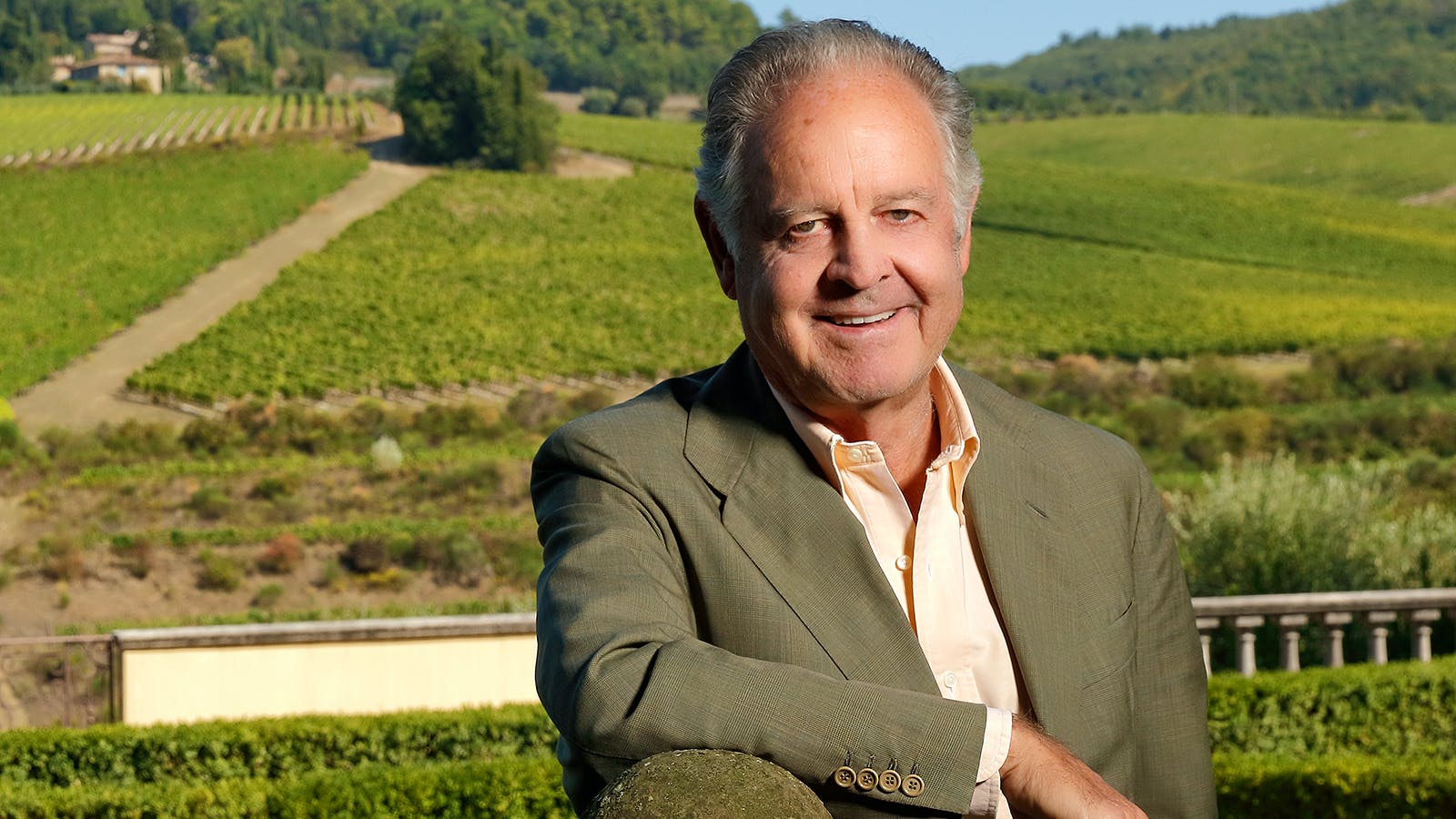
When it comes to Tuscany’s wine giants, Piero Antinori humbly stands near the top. At age 82, he has helmed his family’s 600-year-old business, Marchesi Antinori, for more than 50 years, and has partnered on wineries in Napa Valley, Washington and Chile. Antinori began making his mark in 1971, when he upended Tuscan wine tradition (outraging some Italians) and introduced Bordeaux-inspired winemaking techniques to the rolling hills of Chianti Classico. The results were two wines, Tignanello, and a few years later, Solaia, which helped introduce the super Tuscan wine category.
In the latest episode of Straight Talk with Wine Spectator, Antinori swirled a glass of his Chianti Classico Riserva 2016 and spoke with senior editor Bruce Sanderson about handing control of the company to his three daughters, a tasting of all 39 vintages of Tignanello and his thoughts on the 2020 vintage.
Antinori remembers his first vintage very well. Following his father’s retirement, friends, colleagues and competitors were skeptical about an inexperienced 28-year-old taking over the business, but Antinori’s first go surprised many.
“The quality of that wine turned out to be one of the best of that period,” Antinori said. “That gave me a lot of confidence, enthusiasm and courage in myself, and helped me in my future activities.”
The firm was primarily known for sourcing grapes for various blends they produced. As focus shifted from quantity to quality, Antinori saw an opportunity for change. He calls this new direction “the renaissance of Tuscan wine,” and catalyzed it by blending the local Sangiovese grape with Cabernet Sauvignon and Cabernet Franc, resulting in Tignanello and Solaia. Nearly three decades later, the 1997 Solaia took the No. 1 spot in Wine Spectator‘s Top 100 wines of 2000. Last year, Antinori tasted all 39 vintages of Tignanello in one sitting for the first time.
“It was very interesting to see the evolution and the difference between vintages,” he recalled. “[Tignanello] represents a very important turning point in the history of our company and Italian wines in general.”
In the mid-1980s, Antinori says he realized all three of his daughters were determined to join the family business. At the time, it was unusual for women to work in the Italian wine industry, but it made Antinori happy. Today his daughters and CEO/chief winemaker Renzo Cotarella are taking further control of the show. Antinori’s eldest daughter, Albiera, is the current president of the company, the first woman to hold the top job.
Although Antinori calls Tuscany home and “a paradise for fine wine production,” he has spearheaded wine projects in Napa, Washington and Chile. With Antica Napa Valley, a Cabernet partnership with Col Solare and the recent acquisition of Chile’s Viña Haras de Pirque, Antinori has developed a palate for new climates.
“To be able to produce a wine under totally different conditions is something which can give an added value to the experience of everybody,” he said. “But our focus remains in Tuscany, where my family started to produce wines.”
With the 2020 vintage in tanks and barrels, Antinori feels optimistic despite a tumultuous year. He says the season was marked by typically warm temperatures, but cooler-than-normal conditions at night. “The final result is ripe grapes and soft tannins.” Antinori believes good acidity levels add freshness to these wines. “I think it’s going to be a great vintage.”
Watch the full episode with Piero Antinori on Wine Spectator’s IGTV channel, and tune in to catch Straight Talk with Wine Spectator every Tuesday and Thursday. Tonight, news editor Mitch Frank will speak with Cristina Mariani-May, third-generation CEO of American import firm and Tuscan wine company Banfi Vintners. Next week, Oct. 20, senior editor James Molesworth will chat with Napa winemaker Andy Erickson and on Oct. 22, executive editor Thomas Matthews with Chilean wine pioneer Aurelio Montes.